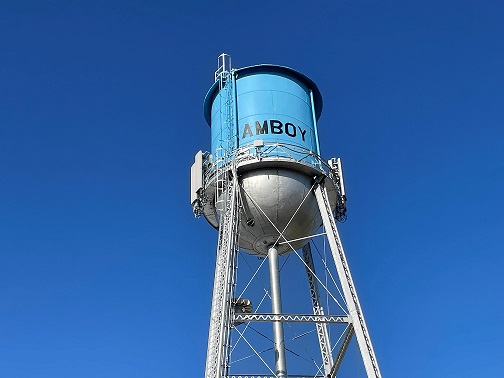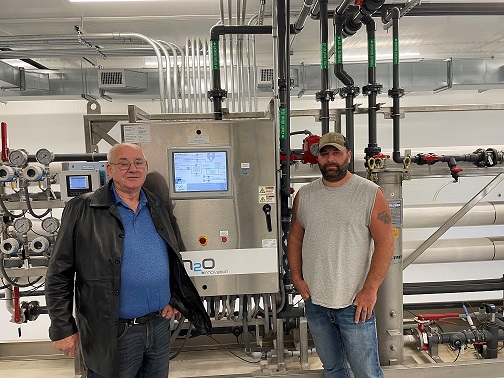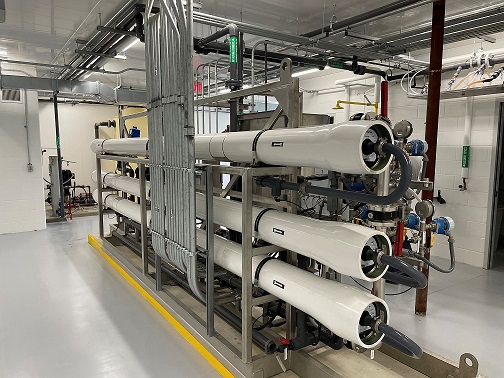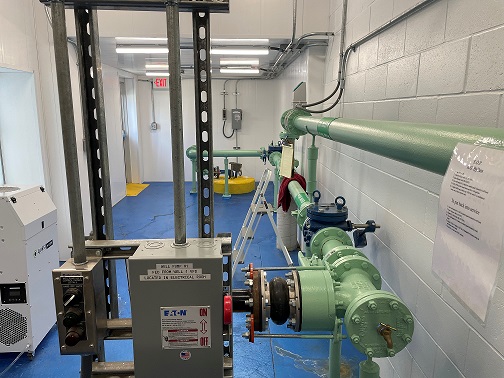Drinking Water Protection
- Drinking Water Protection Home
- About Us
- A-Z Index of Contaminants in Water
- Community Public Water Supply
- Drinking Water Grants and Loans
- Drinking Water Institute
- Drinking Water in Schools and Child Cares
- Drinking Water Revolving Fund
- Laws and Rules
- Noncommunity Public Water Supply
- Source Water Protection
- Water Operator and Certification Training
- Drinking Water Protection Contacts
Related Topics
- Annual Reports
- Drinking Water Risk Communication Toolkit
- Drinking Water Protection External Resources
- Fact Sheets
- Forms
- Invisible Heroes Videos: Minnesota's Drinking Water Providers
- Noncom Notes Newsletter
- Sample Collection Procedures (videos, pictures, written instructions)
- Waterline Newsletter
Related Sites
- 10 States Standards
- Clean Water Fund
- Health Risk Assessment – Guidance Values and Standards for Water
- Minnesota Well Index
- Water and Health
- Wells and Borings
Environmental Health Division
Amboy Tackles Wastewater Problem with Drinking Water Solution
From the Winter 2024-2025 Waterline
Quarterly Newsletter of the Minnesota Department of Health Public Water Supply Unit, Waterline
A complete list of feature stories can be found on the Waterline webpage.

A half-hour drive southwest of Mankato in south-central Minnesota, Amboy is laid out in a grid pattern to the north of Minn. Hwy. 30 (Maine Avenue) and east of U. S. Hwy. 169. To the south is a soybean factory, which has its own water supply. Along with some restaurants and businesses in town, the commercial customers are a Casey’s gas station and convenience store at the highway junctions, and across the street a Dollar Store is going in, but most of the city’s water usage is by its 535 residents.
Like much of the area, Amboy’s raw water is hard. Until recently, most of the homeowners had water softeners, and the discharge from the ion-exchange process created high levels of chloride in the effluent from the wastewater plant, located on Maine Avenue about a mile east of Hwy. 169.
Halfway between the wastewater plant and highway is City Hall, which is connected to the city garage and water treatment plant. Amboy’s water treatment system is known to go back to the 1930s, and for much of that period, a sand filter removed iron and manganese. The city grappled with radium levels in recent years. However, the real issue wasn’t the water coming out of the plant but from individual homes, with the regeneration of the softeners creating the salty discharge that became the focus of the Minnesota Pollution Control Agency (MPCA).
With action needed, longtime city administrator Patty Smith worked with Jeff Urban of public works as well as Karen Cavett of SEH Inc. to explore options and funding. (Urban and Cavett have since retired and Urban has also died.) Money came from a Point Source Implementation Grant (PSIG). “In general, PSIG provides an 80% grant to wastewater systems components needed to meet a more stringent wastewater effluent limit,” said Chad Kolstad, supervisor of the Infrastructure Unit at the Minnesota Department of Health.
Though it was a wastewater grant, the money went into a reverse-osmosis (RO) unit for the water treatment plant. “When addressing chloride discharges, it is more cost effective to address the issue on the drinking water side,” Kolstad explained.
The city’s water treatment system goes back nearly 100 years, and much of this period consisted of a sand filter to remove iron and manganese. The aging filter was removed and replaced with a two-stage RO system, now operated by Don Wolters and Chris Kruse. In addition to reducing levels of iron, manganese, and radium, the treatment plant provides softened water to residents.
Amboy has two wells within the plant, both around 500 feet deep and drawing from the Jordan-Wonewoc and Tunnel City-Wonewoc aquifers. Kruse explained that they can rotate the wells and even bypass the treatment system temporarily if more water were needed, such as for fire protection.

John Thom of SEH Inc., Chris Kruse of Amboy, and the city’s new reverse-osmosis water treatment system.

Incoming water goes through two cylinders for the first stage of treatment and then through the other cylinder, which is the second stage. “It’s getting fed at 60 gallons a minute, and it makes 45 a minute,” said Kruse, nearly an 80% recovery rate, which is standard for RO treatment.
The city uses a clean-in-place (CIP) system – essentially the equivalent of backwashing in conventional treatment plants – and is initially performing the cleaning every four weeks. Kruse explained the process, pointing to the RO unit as he said, “We run product water into here. We put in 660 gallons of water for the first step. Then we have to heat this water to 90 degrees. Once you get your water temperature up to 90 to a hundred degrees, then we add three pails of solvent and then we'll run it. We do stage two first, run it for an hour, then we switch it to do stage one, and then we drain this and then we turn it on for 15 to 20 minutes to flush with clean water. And then we refill this with product water again.”
Kruse said they also use solvent that has a low pH to make the water acidic. For this, stage one is done first. “What I’ve been doing is run it for an hour and have it sit for a half-hour so that acid can just sit there and eat the stuff,” said Kruse. “Then we turn it back on, run it for another 45 minutes and go to stage two. We run that for an hour, shut it all off, run the tank back out, and then we rest it for 15 to 20 minutes. We look at our scum on the screen, check it to make sure it's rinsed well, and then we shut everything down and then put the production water back to the tower.”
Kruse noted that they are probably cleaning more often than necessary as a precaution whiles they learn more about the operation of the system in its early years. “We’re trying to figure out the happiness of everything.”
Chemicals, chlorine and fluoride, are added in the post-treatment stage. “You can’t have chlorine or anything like that going into the filters,” said Kruse. “You destroy those membranes. And we also put filters in place when we’re doing the CIP, to catch the particles that are coming out to make sure we’re not pushing it back into the membranes.”
“The RO unit only deals with the hardness in the water, unlike the home softeners, where they can’t really control each discharge clearance because of the softening,” said John Thom of SEH Inc. “So you gain control of that by centralized softening, and you’re going to see more and more of that.”
The total project, which included a rehabilitation of the garage for the new equipment, came to about $2 million, with 80% covered by the PSIG grant. The reverse-osmosis system went on-line in 2023, allowing homeowners to discontinue their softener usage and, with it, their chloride discharge to the wastewater plant.

Amboy's two wells.
Go to > top.